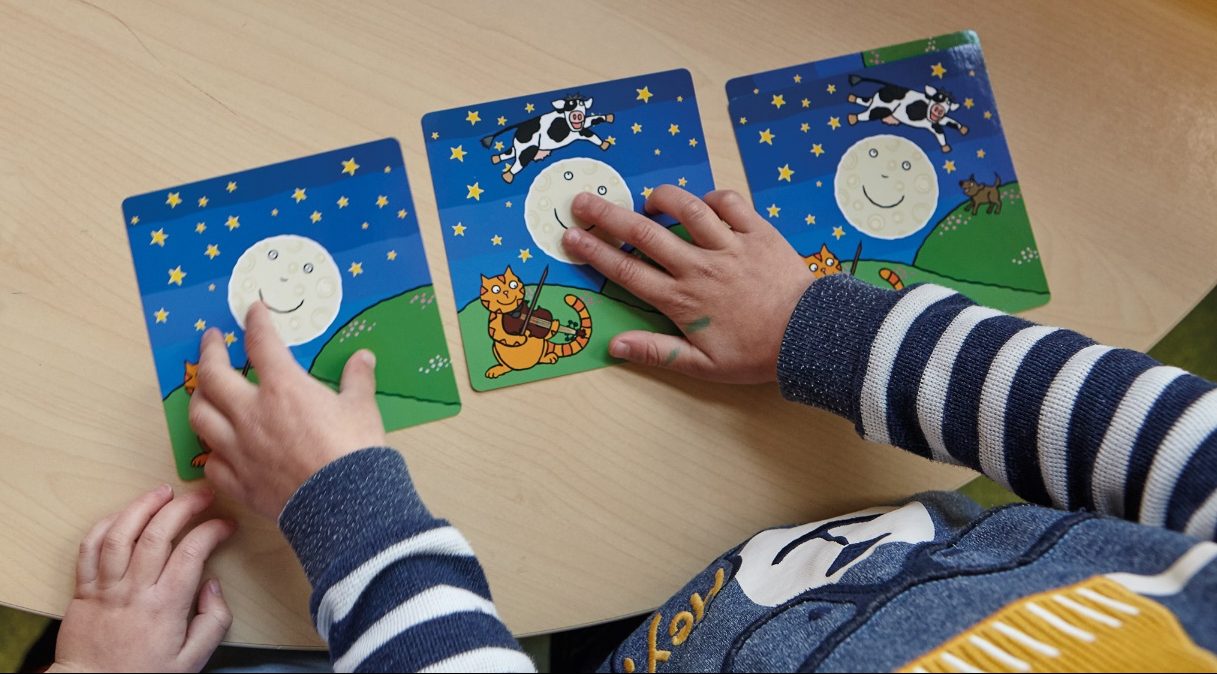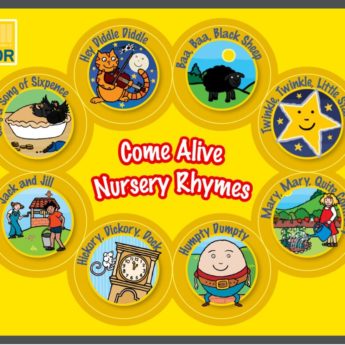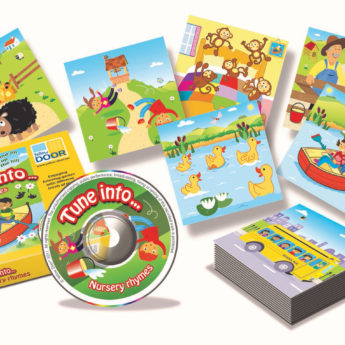The wonder of rhyme!
Why rhymes and songs are so important in the early years
Nursery rhymes and songs are wonderful! Not just because they are fun and engaging for young children, but because they can make a real difference to children’s language and literacy. Research suggests that children who have a good understanding of rhyme do better in their literacy than children who have poor skills in this area.

Injecting a regular diet of songs, rhythms and rhymes into your early years setting can support early speech, early language and the foundations for literacy. So, what’s going on when we share songs and rhymes?
Rhythm
Nursery rhymes and songs often have an easy to spot, regular rhythm to them. From “Hey diddle diddle, the cat and the fiddle…” to “Mary, Mary, quite contrary…”
These rhythms can help children’s listening skills – they are the foundations of the careful listening needed for developing clear speech; children pick up the patterns of speech and benefit from hearing the repetition of sounds.
Rhyme and repetition
Rhyme helps children begin to recognise patterns in words and to discriminate between different sounds – Wall and Fall, skills needed in the future when sounding out words for reading.
Children can begin to play around with words and rhymes themselves and recognise what happens to a word when a sound changes, like adding St to ar. They are practising important skills when playing with rhymes and songs and having fun along the way.
Activity
Many nursery rhymes and songs have their own actions that can help with engaging children. Most children enjoy the combination of music and action. Many children who struggle to listen, benefit enormously from actions linked to rhymes. It encourages them to take part, engaging them in repetitive songs and rhymes, which in turn support their language development.
Repetition
Children need to hear words a number of times before they really understand the meaning and then use the words as part of their own vocabulary. The joy of nursery rhymes and songs is that they introduce new words, build them into a rhyme and context (which helps children remember them) and then allow children to hear them time and again so they can make sense of the words.

Stories
Lots of rhymes and songs are little stories or “narratives” in their own right – e.g. the story of incy wincy spider, who has some ups and downs in his day or Jack and Jill, who could really do with some help. Sharing rhymes and songs are a great way to introduce children to simple stories and narratives.
In years gone by, parents would often sing rhymes and songs to their babies, using gestures and actions, with silly games alongside. However, recent research is suggesting that many children no longer hear these rhymes and songs as often as they did historically and are therefore not benefiting from the magic of early songs and rhymes.
Using rhymes and songs in our settings and sharing our ideas with each other and parents can really help redress the balance.
10 ideas for exploring rhythm and rhyme with young children
- Encourage children to join in with nursery rhymes and songs with their own rhythms, singing, clapping or with musical instruments, from banging a drum to rattling some bells.
- Encourage children to copy your beats on a drum or shakes on a tambourine to practise basic rhythms.
- Count or sing as you go downstairs or carry out repetitive tasks e.g. as you build a tower or pour sand and water.
- Read lots of rhyming books and when children are familiar with them, leave a space for them to fill in the rhyming words. Talk about what other words might fit into the space that also rhyme.
- Once they are familiar with a rhyme, play around with the words e.g. ‘twinkle twinkle little….bat, how I wonder where you’re at!’
- Sing rhymes and songs that use the children’s own names to encourage turn taking and engagement. Naming rhymes are great for children first getting to know one another.
- Make a collection of objects that rhyme – talk about how they are similar or different. Think about what other things could join this rhyming gang.
- Build in rhymes to everyday activities e.g. ‘this is the way we wash our hands…put on our coats…eat our snack…’
- Develop displays and stories linked to familiar nursery rhymes such as ‘hickory dickory dock…’ or create your own ‘Mary, Mary, quite contrary’ garden area outdoors.
- Make up your own songs and rhymes for routines in your setting or other important things the children need to remember. The repetition and rhythm of rhymes can really help to make information stick.
With thanks to Wendy Lee, Speech and Language Therapist, for writing this blog.
FREE download of ideas to share with parents
See our full range of nursery rhyme resources

 Register/Log in
Register/Log in
 Basket
Basket



Very interesting ideas that we can share with staff.
Wonderful ideas to help children to develop language. learn the repetition of sounds.
Having a mud Kitchen has so many benefits from helping children to develop their imagination, to problem solve, and develop their language.
Children love music and many children will know a couple yo nursery rhymes. the repetition of language helps them to develop their vocabulary and learn new words
A very interesting unit.